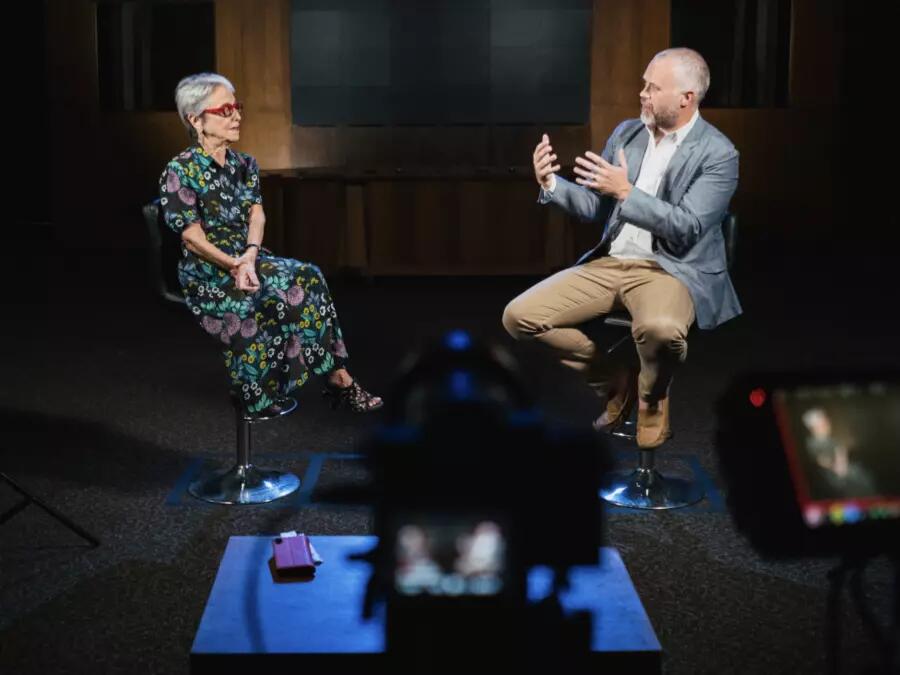
Inside the Munk School’s digital campus
It’s been a year since the onset of the coronavirus pandemic altered much of the way people work, learn, and live. Like many, the Munk School of Global Affairs & Public Policy made quick changes to accommodate a new normal. While the early days of the pandemic offered hope of a hybrid approach, where some students would learn in-person and others remotely, the virus’s spread soon shifted the Munk School’s instruction online. “We started working from home and right away, and we said, ‘gosh, we need to start planning for the summer and then ultimately for the fall,” said Ariana Bradford, the Munk School’s executive director. “So, there was an immediate pivot and this intense feeling of needing to get a plan in place.”
The school’s focus shifted to the creation of a digital campus. The school formed an instructional design team to work on the changes needed to move towards a new digital learning model, while still incorporating important elements of the in-class experience. The instructional design team worked closely with Munk School faculty to engineer new ways to think about their courses and the way they wanted to teach.
“Changes like this make you think about what you are really trying to achieve. What are the learning objectives here? What do you want your students to come away with?” Bradford explained. “It causes you to do a bit of housekeeping and inventory on courses that you might have been teaching for a long time.”
Solomon Klein joined the Munk School as an instructional designer and focused on creating a new learning model based on familiarity, usability and accessibility. “By the time the fall semester started, a lot of people had very rapidly become more comfortable with doing things online than they ever had been before,” he said. Klein and the team would gather feedback from students and faculty throughout the process to shape the digital learning model. In some cases, the feedback sometimes meant adapting otherwise popular practices for online learning. For instance, the team heard that students wanted the opportunity for more real-time interactions with faculty members. As Anupam Chaudhri, the School’s instructional design program assistant, reflects: “We had to balance synchronous and asynchronous learning,” Chaudhri says. “Best practices say a lot of pre-recorded videos are helpful, but we found that was not always the case.”
Central to this digital approach was to encourage faculty members to think about how a digital approach could enhance their courses. “We really wanted to make sure the instructors were leading the process for us. We talked to them about how, if it were a ‘normal’ year, would they be teaching their course?”
Over time, they understood that different courses required different digital tools to flow smoothly. Chaudhri went on to explain how important the IT, communications and A/V teams were in ensuring the finest details were also considered during the process. “Some instructors needed cloud IDs, access to Zoom, branding, virtual backgrounds, photos and presentation slides for online teaching, videos,” she said. “We also decided to put together a comprehensive resource package of tips, tricks, and instructions, on how to use certain platforms.”
According to Solomon Klein, instructional designer at the Munk School, familiarity, usability and accessibility were the main goals of the new learning model. Ultimately, gathering feedback from students and faculty throughout the process helped shape the online learning model in its current form. One such shift involved how much recorded content students actually wanted in comparison to live, virtual interactions with instructors.
 As it turned out, students wanted a slightly more intimate approach to their learning; one that gave them some semblance of in-person classes. “They felt that with the pre-recorded material, they weren’t getting as much of a chance to get to know their instructors,” Klein added. As part of an effort to help students feel connected to their professors, the Munk School created a series of video profiles to showcase faculty teaching in both the MGA and MPP programs.
As it turned out, students wanted a slightly more intimate approach to their learning; one that gave them some semblance of in-person classes. “They felt that with the pre-recorded material, they weren’t getting as much of a chance to get to know their instructors,” Klein added. As part of an effort to help students feel connected to their professors, the Munk School created a series of video profiles to showcase faculty teaching in both the MGA and MPP programs.
In addition to holding classes in real-time, students and professors recreated various elements of in-person learning on digital platforms, including study groups, breakout rooms and even social events. “If you have that opportunity to meet people virtually, it’s going to make your work easier as a group,” Klein explained. “Some instructors created extra time for social gathering. Some would grab a coffee and come back to Zoom just to chat and get to know each other.”
As vaccines continue to roll out, and a return to campus is planned for this coming fall, Bradford hopes that the lessons learned during the pivot to online learning carry forward into the Munk School’s next chapter. “I think going forward, people will be much more fluid in bringing elements of online technology into their courses in different ways,” she explained. “We’ll pick and choose the best of both worlds and I think that’s an amazing leap forward that we’ve been able to make.”
Kristen Ligers, the Munk School’s director of programs, sees many opportunities for in-person and virtual learning to co-exist in the months and years ahead. “A professor’s pre-recorded material can serve as support for their in-person lectures. Students can watch it in advance, and then come to lectures with questions.” she explained. They are also making some pre-recorded content available to incoming fall students over the summer to provide some pre-program preparation.

